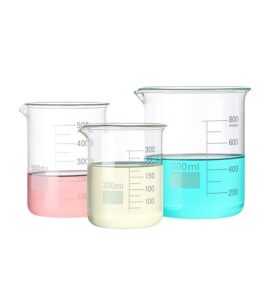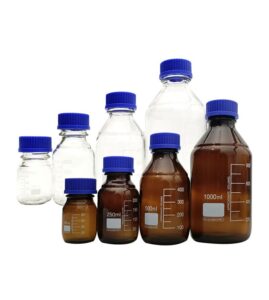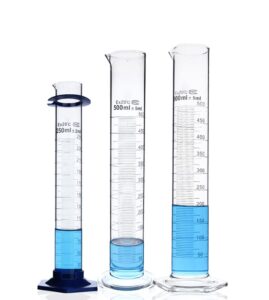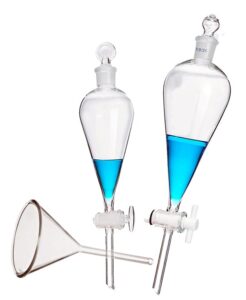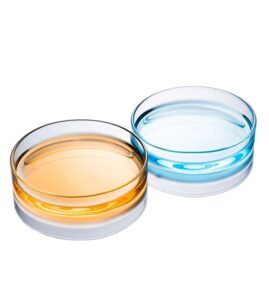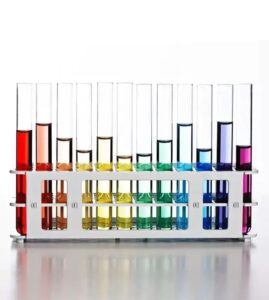Have you ever noticed spots on your laboratory glassware after washing? Or perhaps you’ve seen water droplets stubbornly clinging to the inside of your freshly washed flasks and test tubes. Could these seemingly minor details be impacting your research results?
Indeed, drying glassware in the laboratory is more than a simple step in the cleaning process; it’s a critical stage that can significantly influence the accuracy of your experiments. A piece of improperly dried glassware can introduce unwanted variables and errors, potentially leading to misleading or invalid data.
The importance of properly dried glassware cannot be overstated. It’s essential to maintaining the integrity of your lab work. So, let’s dive in and find out how to effectively dry your laboratory glassware!
Why is Properly Drying Glassware in the Laboratory Important?
Imagine you’re on the brink of a groundbreaking discovery in your research, only to find your results skewed by an unknown variable. It turns out the culprit was the residual moisture in your glassware. In the world of precise measurements and critical reactions, even a minute amount of water, barely visible to the naked eye, can significantly affect outcomes. Can you afford such a risk?. As a matter of fact, research has shown that moisture can cause unexpected reactions, potentially leading to inaccurate results.
Moreover, humidity is another factor that can interfere with experiments. Humidity can cause condensation on the inside of the glassware, leading to the same problems as residual water. A study even found that relative humidity can influence the accuracy of gravimetric measurements.
What are the Common Mistakes When Drying Glassware in the Laboratory?
One common mistake is rushing the drying process. Quick-drying methods like using a towel or paper might leave lint or other particles behind. Additionally, these methods might not reach the interior surface of complex glassware.
Another error often made is not completely rinsing the glassware before drying. Soap residues or chemicals can get ‘baked’ onto the surface during drying, which can interfere with subsequent uses. Research has shown that certain chemicals, even in trace amounts, can significantly influence lab results.
How Should You Dry Glassware in the Laboratory?
Picture this: You’ve just finished a long day in the lab. You’re tired, but you know there’s one final step before you can call it a day – cleaning up. After washing and thoroughly rinsing your glassware, you might be tempted to give them a quick wipe and be done. But as we’ve learned, this might introduce more problems. Instead, consider air-drying as the best practice for most laboratory glassware. Place the glassware upside down on a clean, dry rack, and allow gravity to do its job. This method ensures that no residues are left behind, and it reduces the risk of damage from handling while drying.
For glassware that requires faster drying or is used for moisture-sensitive processes, oven drying or using a drying pistol can be employed. Oven drying involves placing the glassware in a lab oven set at a moderate temperature (usually around 110-120°C) for a period of time. A drying pistol blows warm air into the glassware for faster drying. However, care must be taken not to expose the glassware to a temperature above its resistance limit or for a prolonged period, as this might cause thermal stress and potential breakage. Consult the glassware manufacturer’s guidelines for precise instructions.
How to Maintain Glassware After Drying
After drying, your glassware should be stored in a clean, dust-free environment until it’s needed again. Proper storage minimizes the possibility of the glassware becoming contaminated before use. Closed cabinets are ideal for storage, as they protect the glassware from dust and other airborne particles.
If your glassware is used for highly sensitive procedures, consider covering the openings with aluminum foil or parafilm after drying. This extra step can provide additional protection against contamination.
One important reminder is not to stack your glassware. Stacking not only risks chipping or breakage, but it can also make the glassware more difficult to fully clean and dry in the future.
Tips for Drying Specific Types of Glassware
Different types of glassware might require slightly different drying methods. For example:
- Volumetric flasks and other narrow-necked glassware can be challenging to dry due to their design. Using a drying pistol or oven drying can be effective for these items.
- Glass slides and cover slips used in microscopy are often air-dried, but they can also be dried using a slide warmer to expedite the process. Be aware that overly rapid heating may cause the glass to crack.
- Pipettes can be hung vertically in a drying rack after washing. A pipette washer/dryer can also be used to clean and dry pipettes efficiently.
These methods can be adjusted according to your specific lab protocols or the nature of your work.
Conclusion
Proper drying of laboratory glassware is a crucial aspect of maintaining the integrity of lab work. Whether it’s air-drying, oven drying, or using a drying pistol, each method has its own benefits and considerations. Always remember to rinse thoroughly before drying, avoid rushing the drying process, and store your glassware properly after drying.
By taking the time to correctly dry your lab glassware, you are taking an essential step in ensuring the accuracy and validity of your research results.


